Shannon V. OKeets
Posts: 22095
Joined: 5/19/2005
From: Honolulu, Hawaii
Status: offline

|
Today's installment of new text for the Player's Manual. This finishes the documentation for the phases in the sequence of play. next up are the subphases.
===
7.4.16 Ukraine (RAC 19.12)
This is a optional rule and if it has not been selected, the phase is skipped.
The major power that controls Kiev has the option to cut the Ukraine out of the USSR and transform it into an aligned minor country, (provided that hasn’t already been done). If the Axis does this, the Ukraine becomes aligned to the Axis side, otherwise it becomes aligned to the USSR. In either case this only happens if the major power controlling Kiev possesses an offensive chit and is willing to spend it to create the Ukraine. Additionally, the Axis can only create the Ukraine if Germany is willing to destroy several SS corps units (see RAC 19.12 for details).
If the Ukraine is created, several changes occur as to who controls what territory in the Ukraine and partisan units in the Ukraine may be destroyed. All of these tasks are performed by the program without the players having to make any decisions. This phase is over once: (1) the controlling major power declines to create the Ukraine or (2) the program finishes performing the tasks necessary for creating the Ukraine.
7.4.17 Conquest (RAC 13.7.1)
During this phase, the program checks each country in the game to see if it has just been conquered. If it finds one, it immediately determines whether the conquest is Complete or Incomplete. It then performs the various tasks related to conquest, which differ slightly depending on whether the conquest was complete or incomplete (see RAC 13.7.1 for details).
Conquest usually causes control of the conquered country’s hexes to change, which may result in units having to perform forced rebases - this is equivalent to them being overrun. Should that happen, a digression takes place, permitting the owning player(s) to rebase their units. As always, rebasing naval units might be intercepted and naval combat may occur. Units unable to rebase may be destroyed, in which case a scrap digression occurs.
Once conquering a country has concluded, the program goes back to the list of countries in the game and resumes searching for additional conquered countries. After all countries have been checked by the program, the game advances to the next phase.
7.4.18 Support Minor Countries (RAC 13.7.2)
During this phase the program checks all minor countries to see if they are being supported by the Allies. For this to occur, the Axis must be at war with the minor country, the Allies currently have 4 or more corps/armies in the minor country, and the minor country hasn’t been ‘supported’ previously during the game.
If the program finds a supported minor country, then the US entry action #21 occurs (see RAC 13.3.3 for details). After all minor countries have been checked, the game advances to the next phase.
7.4.19 Mutual Peace (RAC 13.7.3)
The program first checks to see any of any of the three compulsory peace agreements might occur for wars between: USSR-Finland, USSR-Rumania, and USSR-Japan. If the requisite conditions have been met (see RAC 19.6.1, 19.6.2, and 13.7.3 respectively for details), then the major power which has the ability to mandate peace is asked if that is what they desire. Note that the compulsory peace between the USSR-Japan is an optional rule and is only checked if that rule has been selected.
If the deciding player enforces peace, then the program: (1) effects changes to which country controls what hexes, (2) changes the state of relations between the countries to ‘neutral’, and (2) performs any required relocation of units. Relocating units is different from rebasing them. Relocated units are ‘teleported’ to the nearest friendly hex where they can legally stack, without regard to the normal rules for moving units. Relocating units is performed as a digression and the owning player(s) of the unit(s) get to choose in which hex each unit is placed. However, the choice of hexes is restricted to the ‘nearest’ hex, so there really is no choice unless 2 or more hexes are equidistant.
After the three compulsory peace agreements have been checked, and any mandated peace agreements effected, the program asks all warring countries if they want to agree to mutual peace. For China to come to peace, both China and the USSR (which controls the Communist Chinese) must agree. If both warring sides agreeing to peace are major powers, then a neutrality pact is put into place. Other details of the peace can include changing which side controls what territory and the establishment of unbreakable trade agreements of a fixed duration.
Should a mutual agreement to come to peace be reached, the program effects the requisite changes, which may result in units being relocated as described earlier in this section.
Once all mutual peace agreements have been declined or implemented, the game advances to the next phase.
7.4.20 Vichy Declaration (RAC 17.1)
If an Axis major power controls Paris and France is not conquered, the Axis major power is asked if it wants to install a Vichy Government (see RAC 17.1 for more restrictions on when Vichy France can be declared). Should Vichy be declared, a lot of detailed consequences happen. The program performs these as a series of subphases to this phase (see section 7.12 in this document for subphase details).
The game advances to the next phase if Vichy is not declared or after all the Vichy subphases have been concluded.
7.4.21 Liberation (RAC 13.7.5)
During this phase, the program checks each country in the game to see if it has just been liberated. If it finds one, it immediately performs the various tasks related to liberation (see RAC 13.7.5 for details).
Liberation usually causes control of the liberated country’s hexes to change, which may result in units having to perform forced rebases - this is equivalent to them being overrun. Should that happen, a digression takes place, permitting the owning player(s) to rebase their units. As always, rebasing naval units might be intercepted and naval combat may occur. Units unable to rebase may be destroyed, in which case a scrap digression occurs.
Once liberating a country has concluded, the program goes back to the list of countries in the game and resumes searching for additional liberated countries. After all countries have been checked by the program, the game advances to the next phase.
7.4.22 Surrender (RAC 13.7.6)
This is a optional rule and if it has not been selected, the phase is skipped.
The program checks every major power home country that is at war to see if the requisite conditions have been met for the country to surrender. If any is found, the major power is asked if it wants to surrender. If the player decides to surrender, it is treated as if it were a conquest (see RAC 13.7.6 for more details and section 7.4.17 in this document for how complete conquest is effected).
After all major power home countries have been checked and surrender either declined or implemented, the game advances to the next phase.
7.4.23 Factory Destruction (RAC 22.2)
This is a optional rule and if it has not been selected, the phase is skipped.
The program checks to see if there are any blue factories whose hexes are occupied by an enemy land unit. If that condition is found, then players that controls those land unit are given the opportunity to destroy those factories.
If no factories are eligible to be destroyed, the program advances to the next phase. Otherwise the phase ends once every player who is eligible to destroy factories has clicked on the End of Phase button in the main form.
7.4.24 Victory Check (RAC 13.8)
The program checks whether the conditions for automatic victory have been met (see RAC 13.8 for details). If so, or if the last run of the game has just concluded, the game advance to the End of Game Phase. If automatic victory has not occurred and there are more turns in the game, the program advances the turn one bi-month (e.g., from Jan/Feb to Mar/Apr), sets the impulse number to 1, and proceeds to the Reinforcements phase (see section 7.2.1).
7.5 End of Game Phase (RAC 13.8 & RAW 30.)
Final victory is determined by examining all the victory hexes in the game, and any scenario-specific victory conditions (see RAC 13.8 and RAW 30 for details). The program then displays the victory form for the players to review (see section 8.7.2.57 in this document for a description of the form).
_____________________________
Steve
Perfection is an elusive goal.
|
 Printable Version
Printable Version
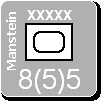





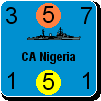
 I will add this.
I will add this.

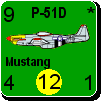
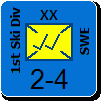
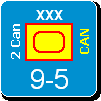
 New Messages
New Messages No New Messages
No New Messages Hot Topic w/ New Messages
Hot Topic w/ New Messages Hot Topic w/o New Messages
Hot Topic w/o New Messages Locked w/ New Messages
Locked w/ New Messages Locked w/o New Messages
Locked w/o New Messages Post New Thread
Post New Thread